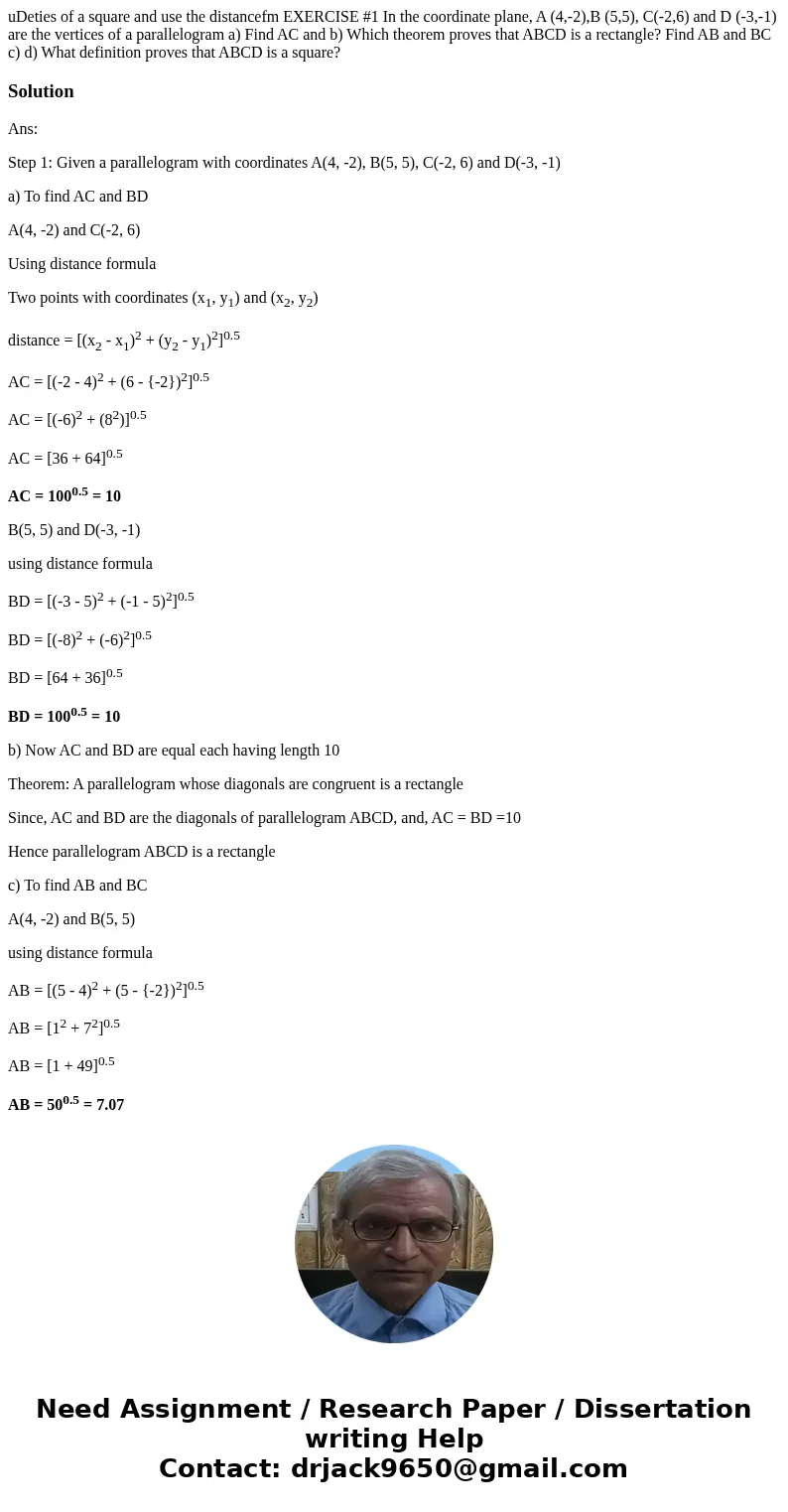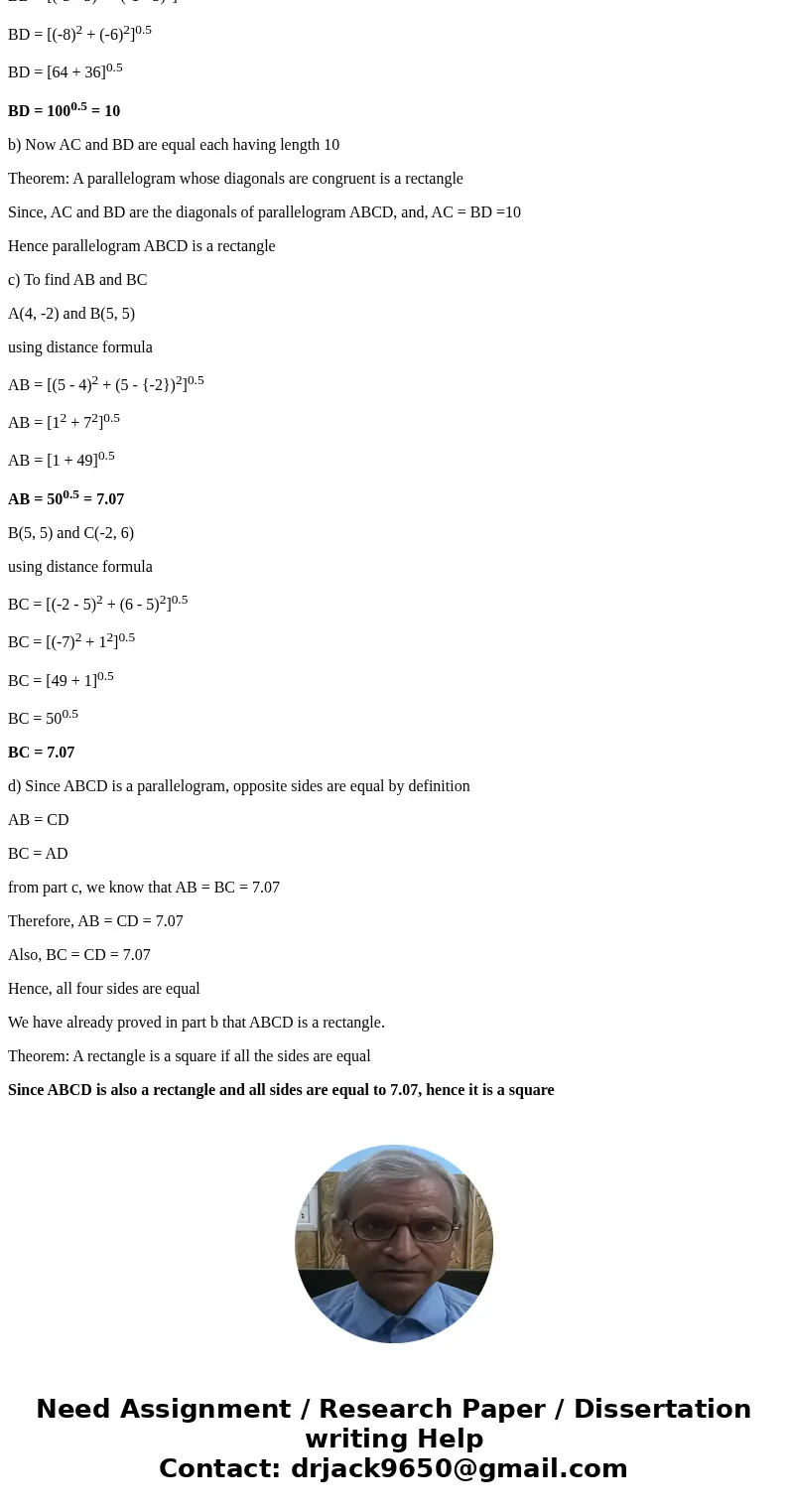uDeties of a square and use the distancefm EXERCISE 1 In the
Solution
Ans:
Step 1: Given a parallelogram with coordinates A(4, -2), B(5, 5), C(-2, 6) and D(-3, -1)
a) To find AC and BD
A(4, -2) and C(-2, 6)
Using distance formula
Two points with coordinates (x1, y1) and (x2, y2)
distance = [(x2 - x1)2 + (y2 - y1)2]0.5
AC = [(-2 - 4)2 + (6 - {-2})2]0.5
AC = [(-6)2 + (82)]0.5
AC = [36 + 64]0.5
AC = 1000.5 = 10
B(5, 5) and D(-3, -1)
using distance formula
BD = [(-3 - 5)2 + (-1 - 5)2]0.5
BD = [(-8)2 + (-6)2]0.5
BD = [64 + 36]0.5
BD = 1000.5 = 10
b) Now AC and BD are equal each having length 10
Theorem: A parallelogram whose diagonals are congruent is a rectangle
Since, AC and BD are the diagonals of parallelogram ABCD, and, AC = BD =10
Hence parallelogram ABCD is a rectangle
c) To find AB and BC
A(4, -2) and B(5, 5)
using distance formula
AB = [(5 - 4)2 + (5 - {-2})2]0.5
AB = [12 + 72]0.5
AB = [1 + 49]0.5
AB = 500.5 = 7.07
B(5, 5) and C(-2, 6)
using distance formula
BC = [(-2 - 5)2 + (6 - 5)2]0.5
BC = [(-7)2 + 12]0.5
BC = [49 + 1]0.5
BC = 500.5
BC = 7.07
d) Since ABCD is a parallelogram, opposite sides are equal by definition
AB = CD
BC = AD
from part c, we know that AB = BC = 7.07
Therefore, AB = CD = 7.07
Also, BC = CD = 7.07
Hence, all four sides are equal
We have already proved in part b that ABCD is a rectangle.
Theorem: A rectangle is a square if all the sides are equal
Since ABCD is also a rectangle and all sides are equal to 7.07, hence it is a square


 Homework Sourse
Homework Sourse